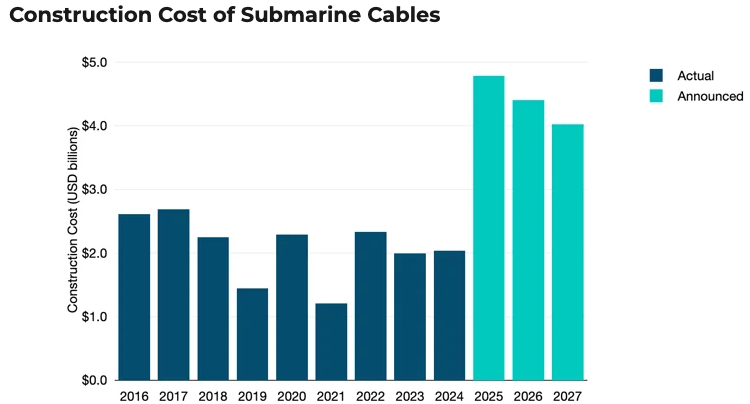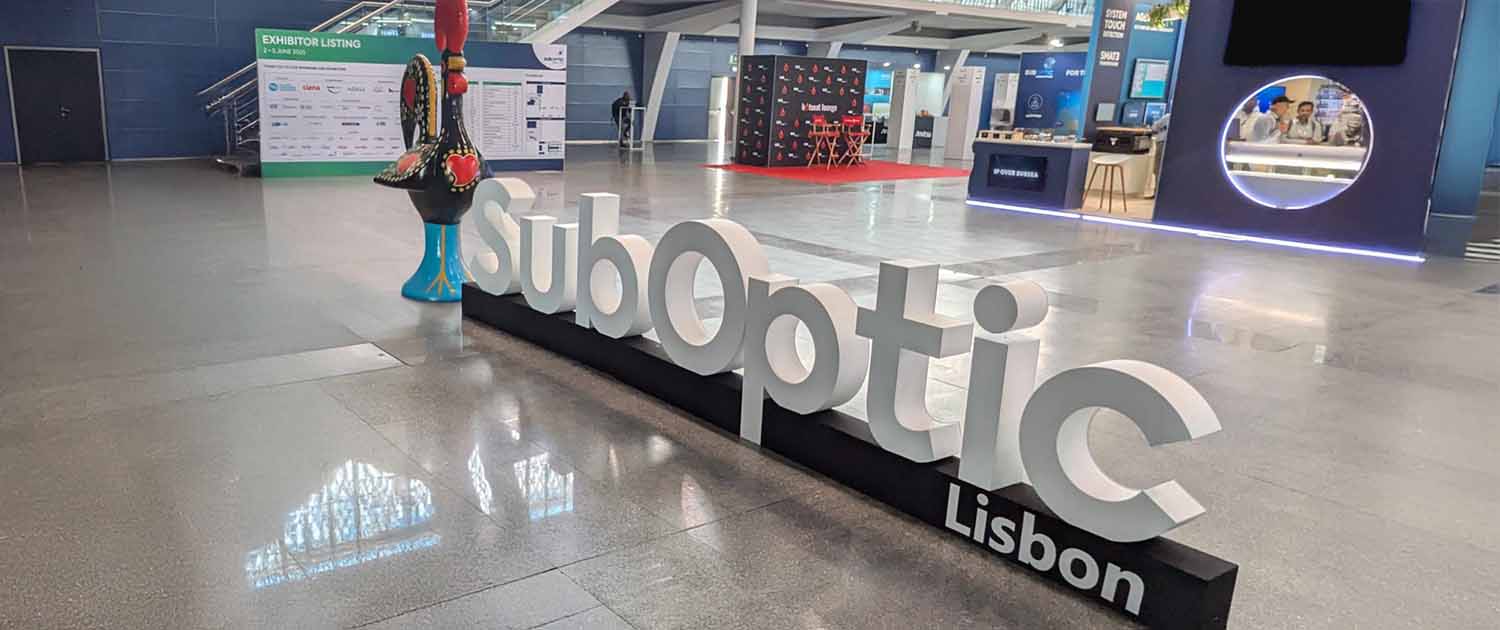SubOptic is a meet-up place for subsea cable technology geeks held every two years. I don’t think I have missed a single event since its beginning in 1986.
This year’s event in Lisbon was the largest, with about 1,080 attendees, a whopping 38% increase over the last one in Bangkok in 2023.
Below are some of the highlights of the conference:
Petabit Cables
All the vendors were talking about cables that can handle petabit speeds (1,000,000,000,000,000 bits per second), but interestingly, each vendor had a different solution to get there.
- NEC is the leader in multi-core fiber cables, and already has a 2-core working cable in the Pacific region and is working on a 4-core solution.
- SubCom is focusing on its C+L band optical technology, which it had introduced in the PLCN cable, and is a leader in that segment.
- ASN has taken a completely different path and is touting its 48-fiber cable solution using Spatial Division Multiplexing (SDM) technology, in which it is a pioneer and a leader.
All of them will ultimately get to the same 1 Pbps plus landmark, and I suspect over time, everyone will end up with the multi-core technology, which is the holy grail.
Sensing Technology
Sensing technologies were one of the biggest topics at SubOptic 2025. While Science Monitoring And Reliable Telecommunications (SMART) subsea cables have been discussed for the past few years, no deployments exist worldwide — the first will be the new CAM ring connecting mainland Portugal to the Azores and Madeira, slated to go live in 2026.
The technology is impressive and almost mandatory for all new subsea cables due to its climate prediction and undersea sensing capabilities, including alerts of potential cuts and accurately pinpointing cable faults. However, I am extremely skeptical of the technology from a political and regulatory perspective. I prefer distributed acoustic sensing (DAS) technology for acoustic, seismic, and vibrational signals, as it can be easily disengaged from the shore ends in case of political and regulatory problems.
In any case, sensing technology is real and here to stay.
Big Fight Between Cableship And Cable Owners
Subsea installation and maintenance cable ships are getting very old and facing end-of-life issues. The industry is estimated to need USD 3 billion to replace and add more ships to the fleet as the number of cables increases worldwide — there are just over 60 currently operating.
While the cableship owners are willing to invest, the cable owners, in particular the over-the-top (OTT) providers, are refusing to sign long-term contracts and want to stick to two-year contracts, hoping they can negotiate better terms in the future.
The OTTs are on the wrong side of this fight, as they need the maintenance ships for the life of their cables, which is around 25 years on average. There seems to be no compromise on either side, resulting in price increases and massive delays due to ship shortages and the political climate in the Middle East and Gulf regions.
The OTTs think they can install more cables than they need, so even if a few are cut and it takes a long time to repair, it won’t affect their network. This is a naive approach to network planning, and in the end, they will have to step down from this staring match. Either that, or if things get really bad, they may buy Global Marine from Keppel, which was recently acquired for under USD 400 million. It’s good to be able to write blank checks and get any toy you want.
Market Size Of Subsea Cables
Until 2020, the subsea cable market was around USD 2 billion annually. During COVID times, it doubled to USD 4 billion annually; in 2025, it is expected to be between USD 5-6 billion!

Some market research firms have come out with atrocious numbers, like USD 67 billion in 2025. These numbers are all false, probably made up to sell reports. Who knows what they are counting? My numbers are directly from the vendors.
Adapted from the original post, which first appeared on LinkedIn.
Sunil Tagare is a serial entrepreneur based in Silicon Valley.
The views expressed by the authors of this blog are their own and do not necessarily reflect the views of the Internet Society.


